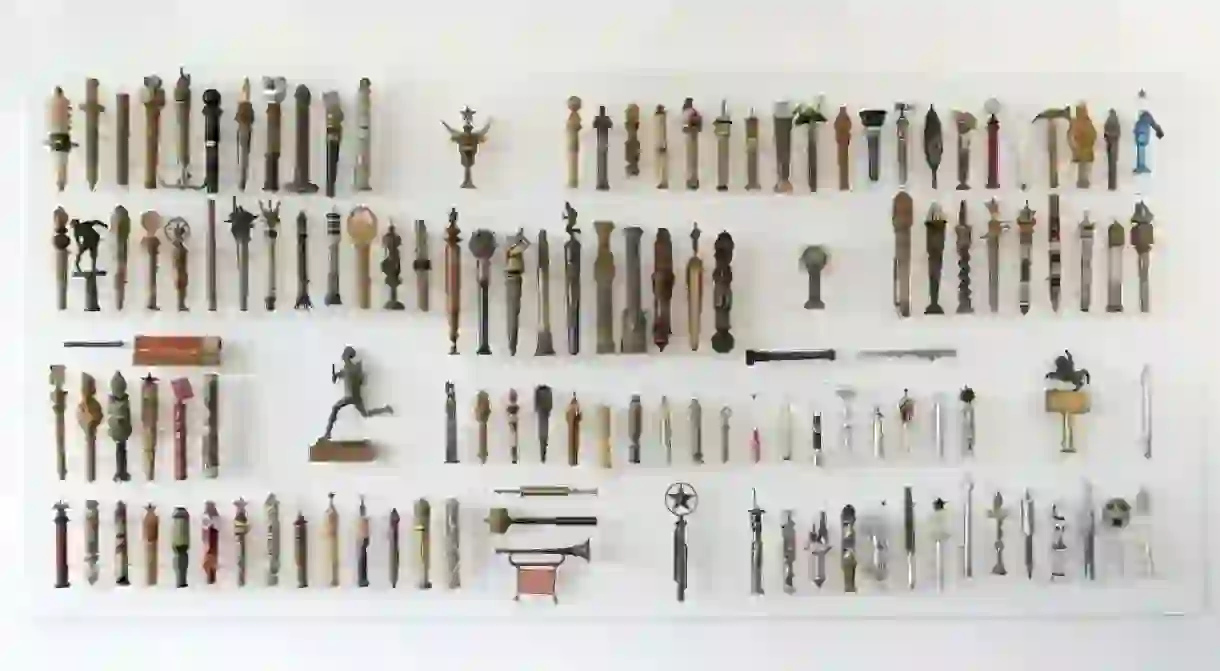One Man and His Batons: Yugoslavia's Youth Relay

Josip Broz Tito is buried in the House of Flowers in Belgrade, but the eyes directed at his grave often find themselves diverted to the collection of batons that hang on the wall nearby. These bars are all from the annual Relay of Youth, one of the great staples of socialist Yugoslavia.
Establishing the race
It is no secret that socialist regimes love themselves some pomp and circumstance, and the razzmatazz surrounding the Relay of Youth (Štafeta mladosti, in Serbian) ticked all of the necessary boxes. The relay achieved two major aims of socialism — namely uniting the whole country in one challenge, and engaging the youth in an active manner.
Yugoslavia came out of World War II as a united nation in international conversation only. The state had been decimated by a brutal three-way civil war during the first half of the 1940s, and Josip Broz Tito was the man tasked with bringing everyone together. His mantra of ‘Brotherhood and Unity’ constantly rang around the country, but Yugoslavia still needed something to unite the younger generations.
The idea came from a student organisation in the central Serbian city of Kragujevac, home to Serbia’s automobile industry. The premise was simple — a baton was to be carried from town to town, traversing the whole of the country before being handed to Tito on his official birthday, May 25.

The early days
12,500 children took part in the first race, which covered 9,000 kilometres and also came with 15,000 signatures from young people in the region of Šumadija. The original relay actually ended in the Croatian capital of Zagreb, but the decision was soon made to switch the finish line to the Yugoslav capital, Belgrade. Where did the race start? Tito’s home village of course, the tiny town of Kumrovec.
Being an official state-sanctioned event obviously helped, but the size of the Relay of Youth quickly ballooned. By 1950, more than a million children were taking part in the event, which now lasted one month and covered all the major towns of Yugoslavia. The relay was the main event on radio and television over that month, as Yugoslavs from all over excitedly followed the progress of the baton from Kumrovec all the way to the Yugoslav People’s Army football stadium and Tito’s hand. In 1957, the relay formally became a national holiday.

Tito’s death and the sudden decline
The relay was underway when Tito died in 1980, and the baton was immediately placed on the ground in respect. Such was Tito’s hold over Yugoslavia it is somewhat surprising that the race continued in the years following his passing, and the final race was held in 1988. Enthusiasm for Yugoslavia was waning, so enthusiasm for a symbolic relay of unity was all but extinguished.
The final nail in the relay coffin came in 1987. Every year, a nationwide competition was held to decide on the official poster for the relay. The 1987 winner was the Slovenian art collective known as Neue Slowenische Kunst (NSK, or New Slovenian Art), but all was not what it seemed.
The poster NSK provided was actually a reworked version of an old Nazi propaganda poster, as the controversial collective aimed to shine a light on the hypocrisy of Tito’s personality cult. Somehow the poster managed to win the competition, but the truth soon came out. Many believe that this marked the end of the Relay of Youth.

The House of Flowers
Josip Broz Tito was laid to rest at Belgrade’s House of Flowers, and a permanent exhibition of the Štafeta Mladosti is in the room next door. The Museum of Yugoslavia still has some 22,000 batons in its archives, the finest of which are on display all year round at the museum. The relay is rarely spoken of in modern times, but it remains another curious quirk from the intense history of what was once Yugoslavia.














